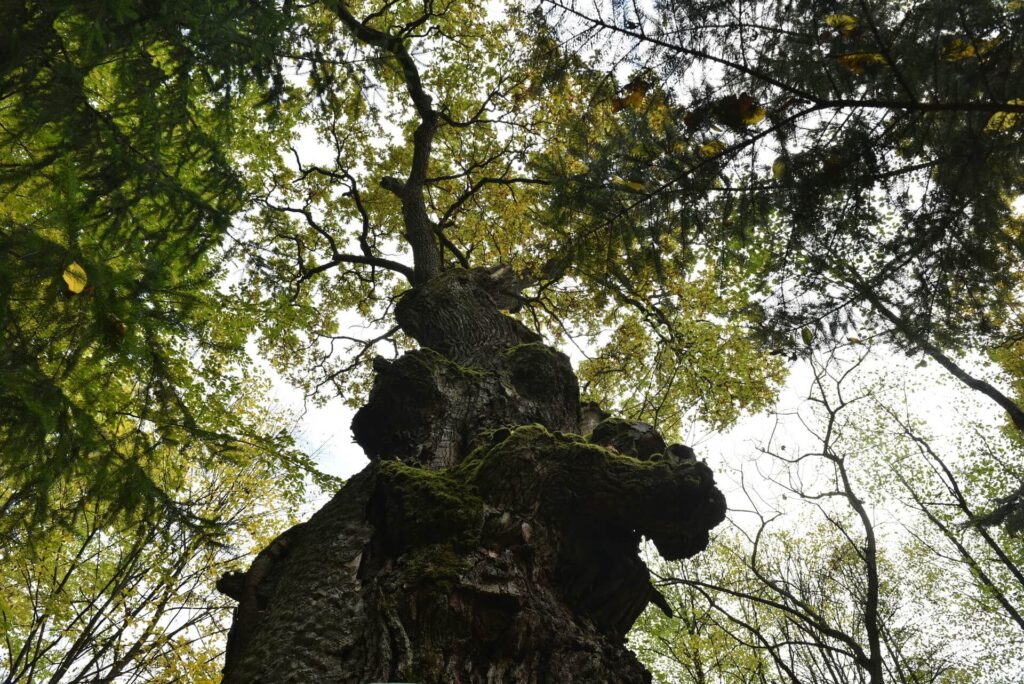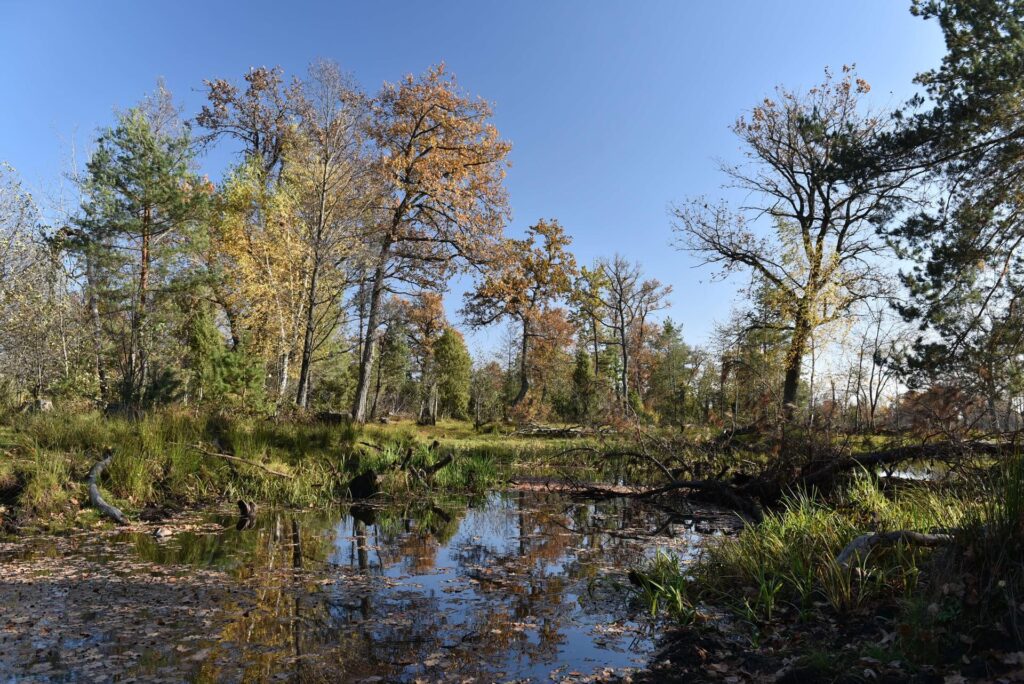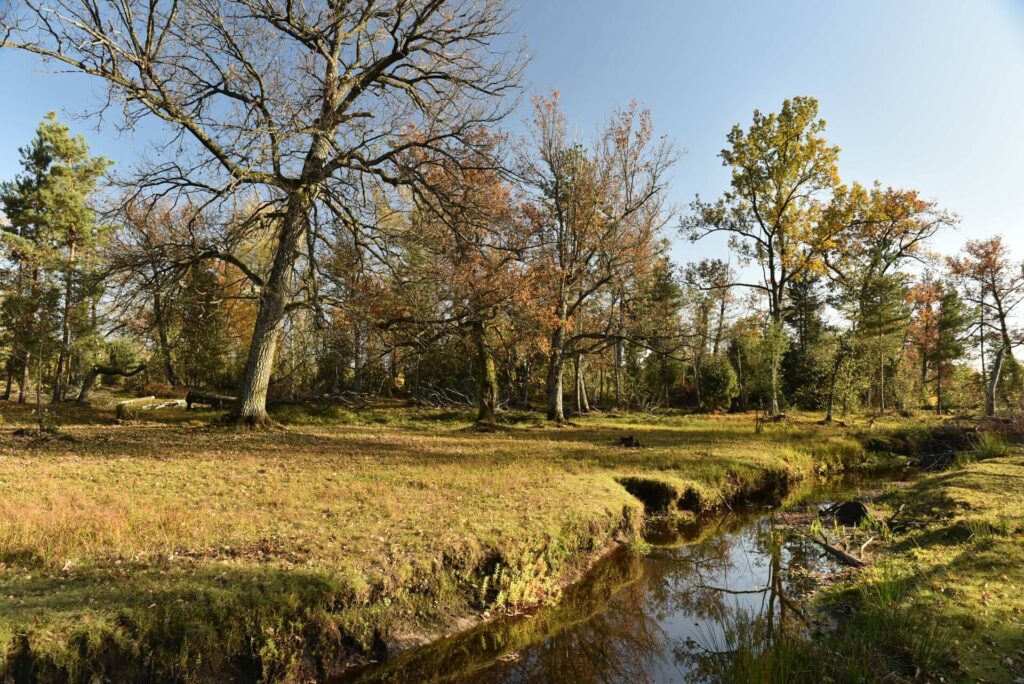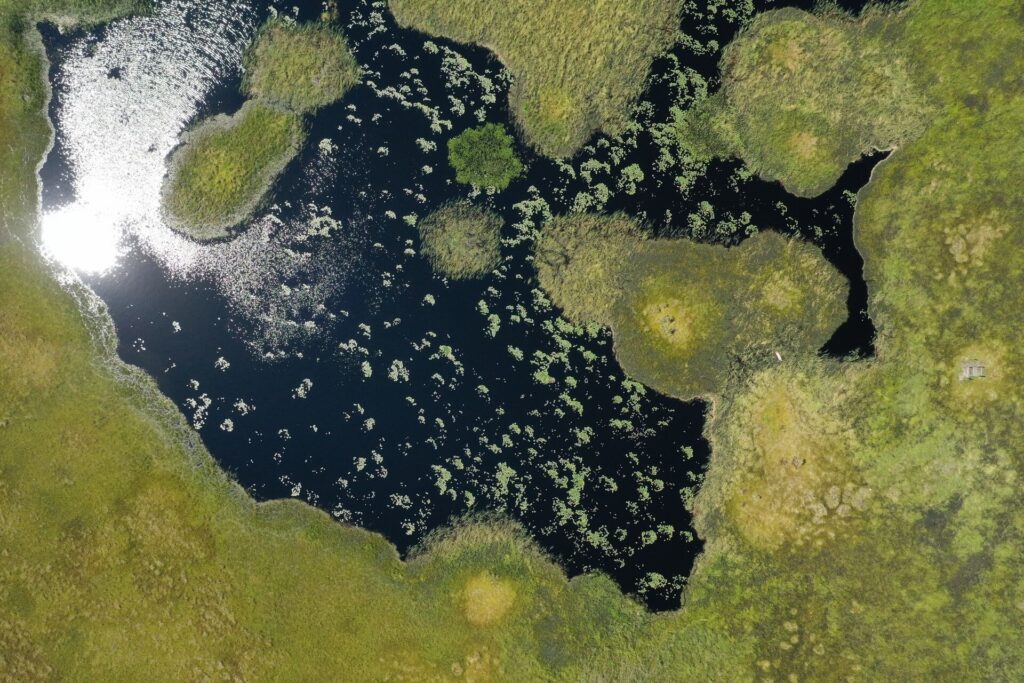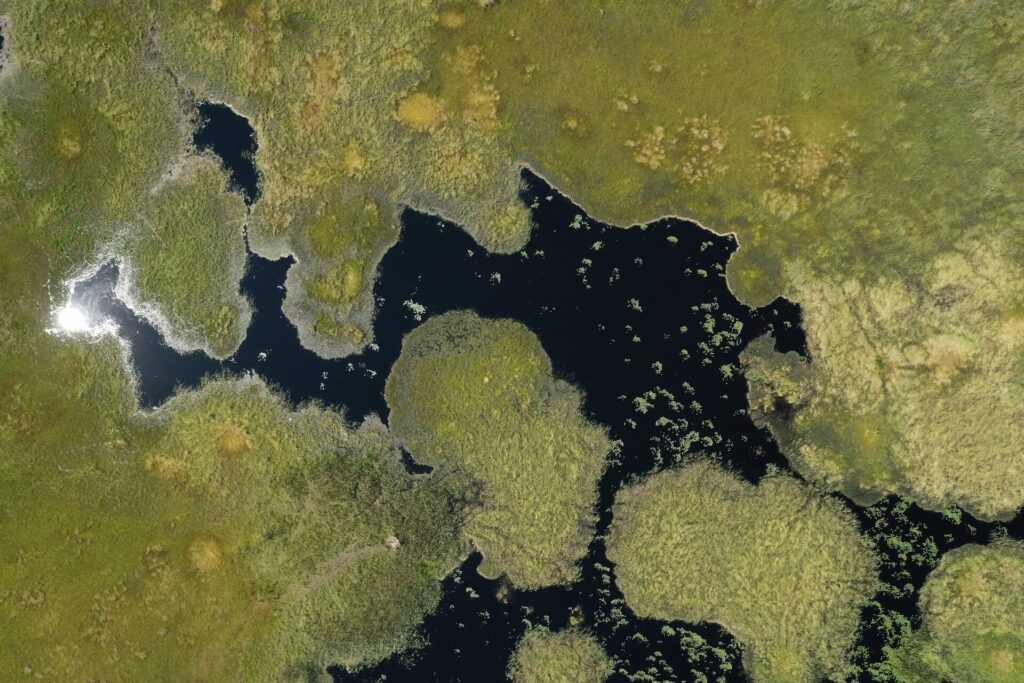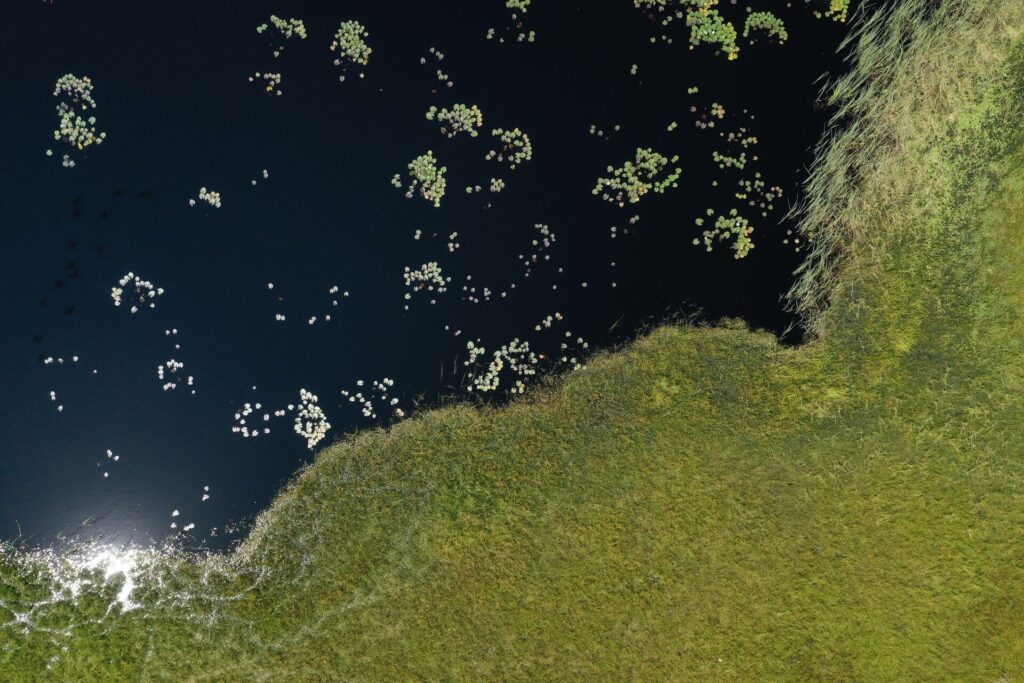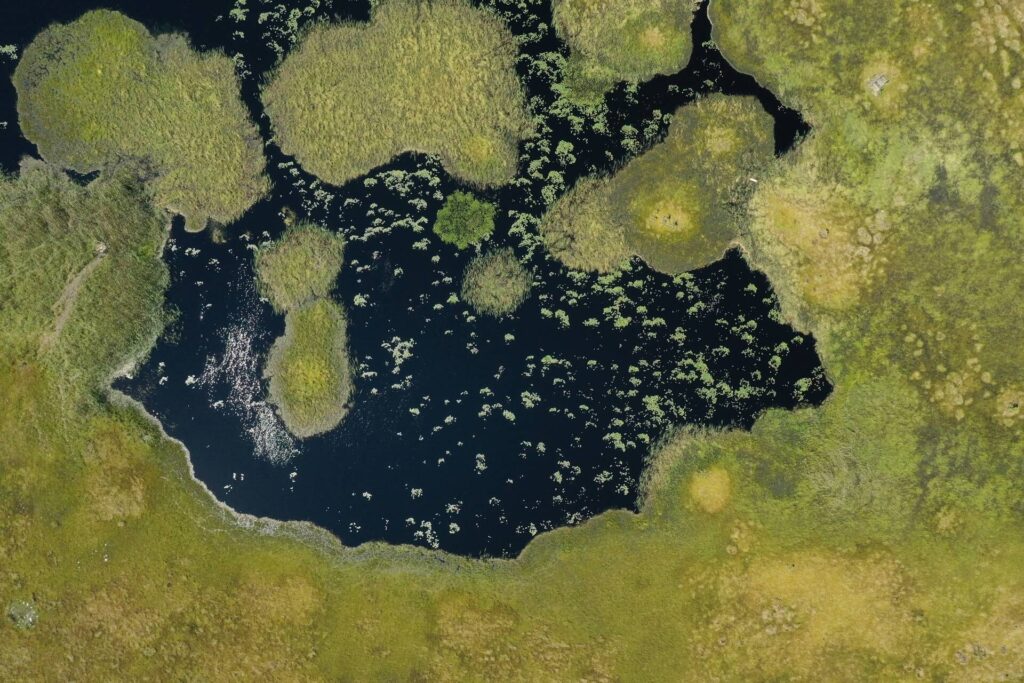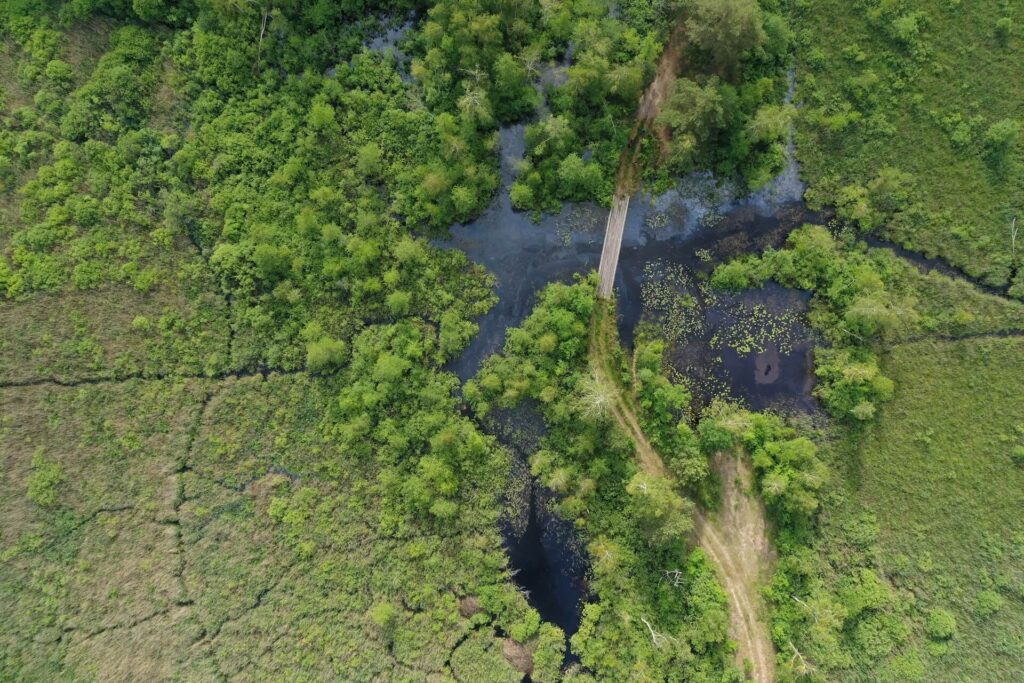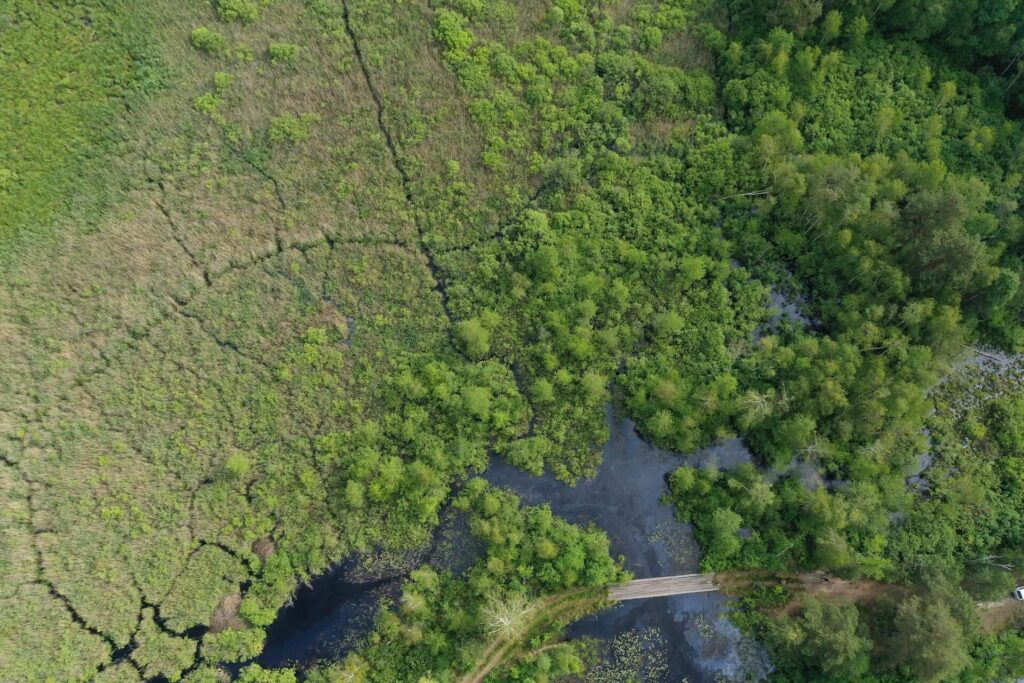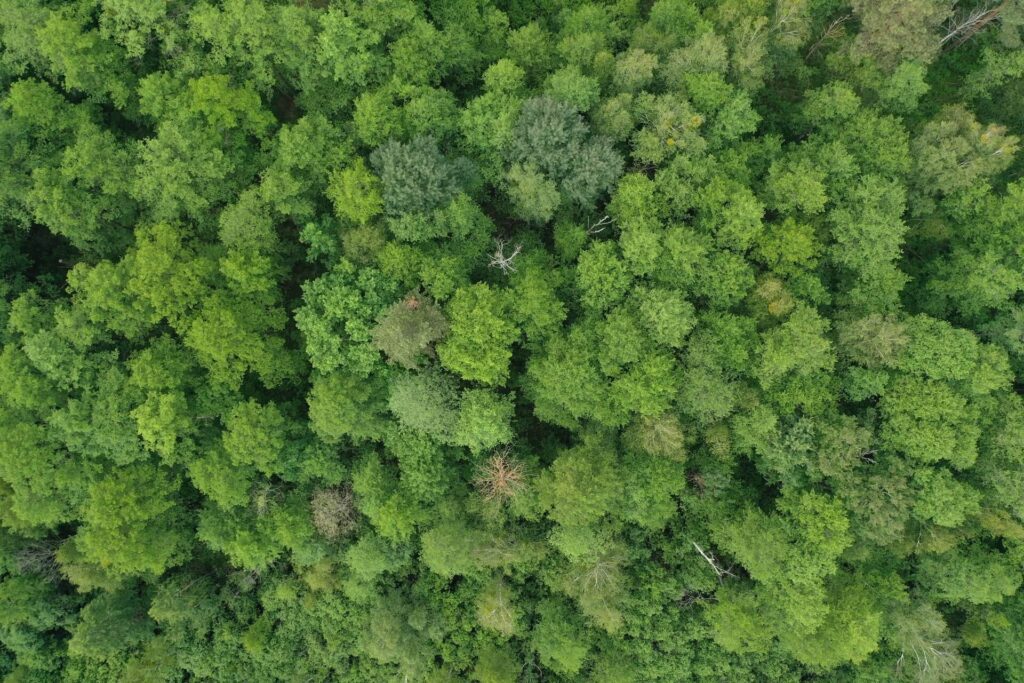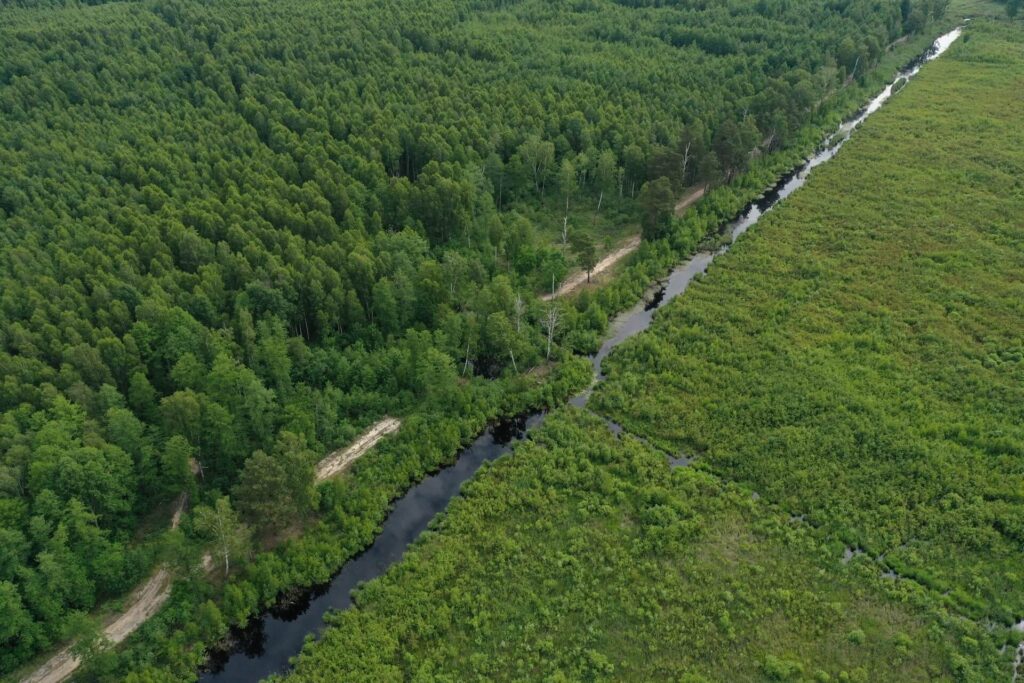Rivnenskyi
The Rivnenskyi Nature Reserve, located in the north of Ukraine, is the largest nature reserve in the continental part of the country, covering an area of 42,289 hectares. Located in the north of the Rivne region, the reserve covers the territories of Varas and Sarny districts and comprises four distinct massifs: Biloozerskyi, Somyne, Syra Pogonya and Perebrody.
Collectively, these massifs host every type of bog found in Ukrainian Polissia, including nutrient-rich lowland (eutrophic) bogs rich in nutrients, and sphagnum-dominated upland (oligotrophic) and transitional (mesotrophic) bogs – habitats that are particularly diverse in the Bilozerka area of the reserve.
In addition to wetland areas, the reserve is also home to forest ecosystems dominated by pine forests. These forests provide a vital habitat for many rare species of flora and fauna.
The park hosts more than 220 species of vertebrates, of which 25 are listed in the Red Data Book of Ukraine and seven appear on the European Red List – including the European mink, lynx, great spotted eagle, bearded owl and black stork.
The landscapes have been carved out by glacial activity in the past, which has created an environment perfect for the reserve’s relict species, which include euphorbia, Lapland willow and some others. This rich biodiversity underscores the importance of the Reserve for the conservation of biodiversity in Ukrainian Polissia.
Due to these rich and unique natural resources, the Rivnenskyi Nature Reserve is a real gem of Polissia that requires constant attention and protection to preserve its ecosystems for future generations.
Since russia’s invasion of Ukraine in early 2022, the Frankfurt Zoological Society (FZS) has been supporting the Rivnenskyi Nature Reserve with partial coverage of operational costs. The FZS also systematically supports biomonitoring, in particular by providing camera traps and equipment for monitoring birdlife.
In 2024, the Frankfurt Zoological Society resumed restoration work on two important marshlands within the reserve – Syra Pohonya and Somyno.
Syra Pohonya is a unique wetland complex that is vital for preserving biodiversity and maintaining the water balance of Polissia. It is home to rare plant species, including sphagnum mosses, cranberries and wild rosemary and provides a critical habitat for Red Book-listed animals such as the river otter and black stork. The bog performs other key environmental functions by absorbing carbon and regulating groundwater. However, it faces threats from drainage, land reclamation and illegal peat extraction. Protecting it requires environmental monitoring and measures to restore its natural hydrological regime.
The Somyno bog, holds high scientific and ecological value for botanists, ecologists and hydrologists interested in its unique characteristics. It is one of the few remaining bog ecosystems in Polissia that has survived in a near-natural state. Botanists, ecologists and hydrologists. Conservation efforts focus on protecting the bog from drainage, reducing the impacts of human activity, and potentially restoring water features to support long-term ecosystem health.
